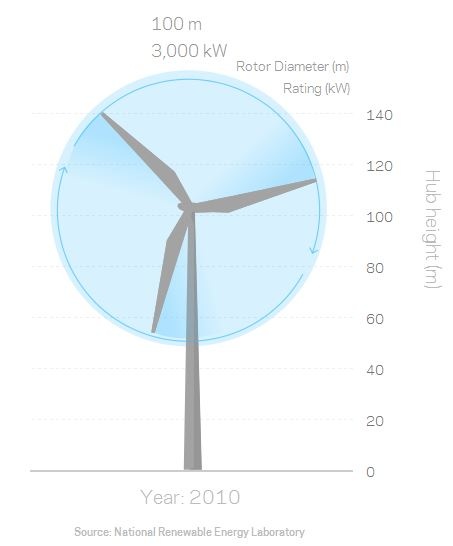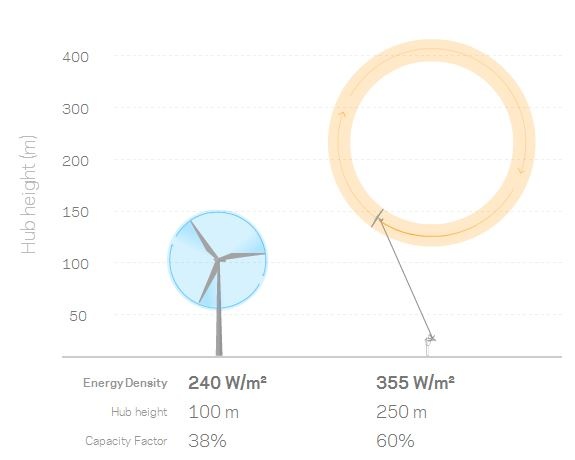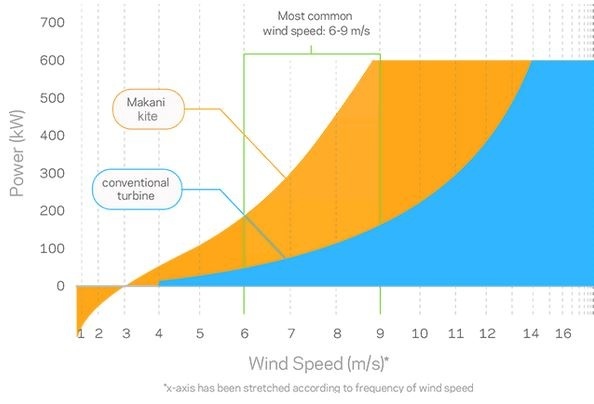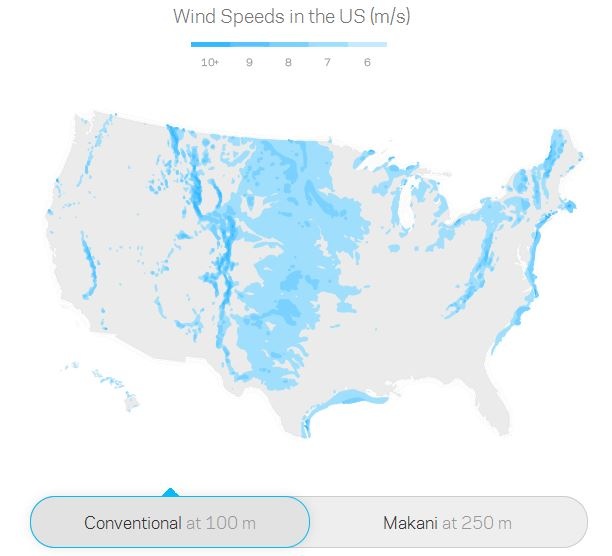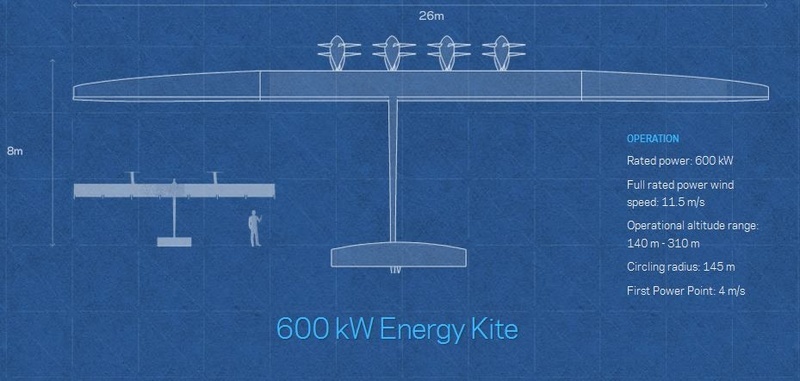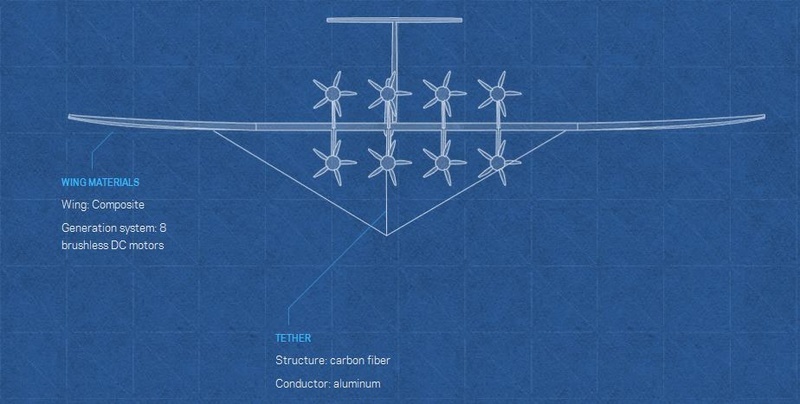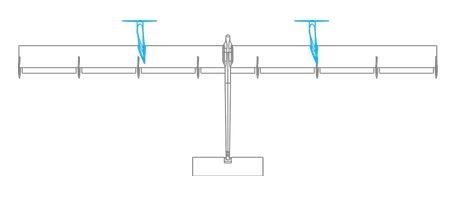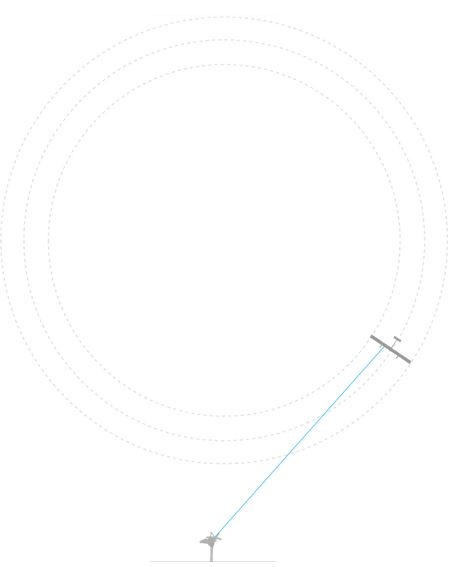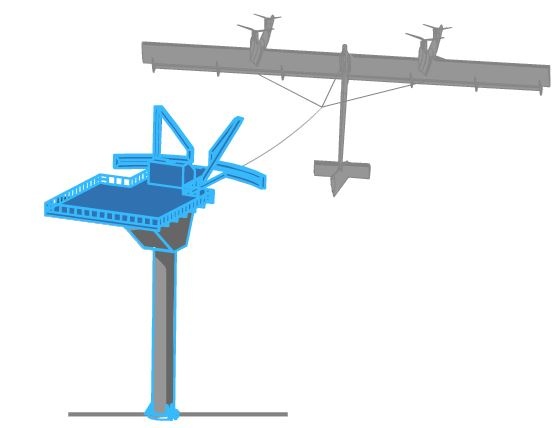What's New in the Windfair World - Advanced Wind Energy from Makani - Energy Kites
The CHALLENGE - Wind Turbine Architecture is at a Plateau
Conventional wind power systems are reaching the limits of their technology. To generate more wind power, turbine structures have become taller and heavier. On average, onshore turbines require 100 tons of steel, fiberglass, concrete, and other materials to produce a single megawatt of capacity to power 500 U.S. homes.
Large structures like this are expensive and complex to construct and therefore can only be installed economically where the winds routinely travel between 20-28 kilometers per hour. Less than 15% of all land around the world meets this criteria. A new approach is needed to drive massive adoption of clean energy.
The SOLUTION- Energy Kites
An energy kite operates on the same principles as a conventional wind turbine, but is tethered to the ground like a kite. The energy kite flies in vertical loops, mimicking the tip of a conventional blade. Building only the tip of the blade lowers the cost and improves energy production.
Energy kites access more wind at lower cost - Without a tower holding them in place, energy kites eliminate 90% of the materials and 50% of the installed cost of conventional wind turbines. At the same time, the tether allows our kite to access better wind at higher altitudes, which makes it cheaper to install in places where traditional turbines don't work. This more than doubles the amount of land available for wind energy production.
Makani kites generate more power at more wind speeds - Because energy kites (orange) are more aerodynamically effective than conventional turbines (blue), they produce more power at any given wind speed. This advantage is even greater when taking into account wind speed frequency—how often the wind blows at each of these speeds. Most windy sites have a lot of wind at 6-9 meters per second, where energy kites perform better than conventional turbines. That results in more energy produced throughout the year.
Makani kites can access more wind in more places - Energy kites operate between 80-350 meters, an altitude that enables access to strong winds in more locations. For example, in the United States, energy kites can generate wind power economically in over two-thirds of the landmass, more than four times the area available to conventional wind.
The TECHNOLOGY - Meet the Energy Kite
How it works:
The Makani kite is a tethered airfoil outfitted with turbines. The kite flies across the wind in vertical loops, fixed to the ground by a flexible tether. Air moving across the rotors forces them to rotate, driving a generator to produce electricity, which travels down the tether to the grid.
Wind rushing over an airfoil generates lift, which in the case of a conventional turbine causes a blade to spin on a shaft. The kite harnesses the energy in the wind by pulling against the tether while the kite travels in a circle, guided by the flight computer. In a conventional wind turbine, the tip of the blade moves the fastest and is therefore the most effective component, responsible for most of the energy production. Similarly, the Makani energy kite captures more energy at the blade tips through small turbine/generator pairs mounted on a kite.
The Makani kite also uses lift force—the lift in this case moves the kite forward and keeps it aloft. In periods of low wind, the rotors on board the kite are powered, allowing the energy kite to hover safely to the ground and wait for the right conditions.
The Kite:
is the size of a single conventional turbine blade and travels in a circle mimicking its path. Flaps on the airframe driven by an on-board computer control the ?ight path of the energy kite.
Kite Mounted Rotors:
capture the wind as it rushes across the kite and convert it into electrical power using small, direct drive generators.
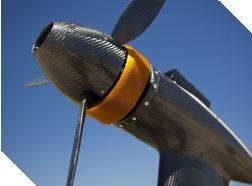
The Tether:
is made of conductive wires surrounding a high strength core. The tether carries the traction force of the kite and transmits the electricity to the ground.
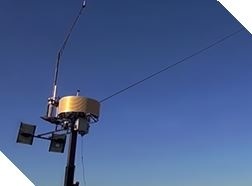
The Ground Station:
serves to stow the kite when not in use. The kite launches and lands by hovering like a helicopter. Before launch and in unfavorable conditions, the kite is stowed at the top of the spar buoy or ground station.
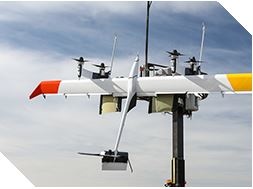
Watch the Makani Wind Energy Kite in Action
For more information on this article, to recieve our Newsletter or get to know more about what w3.windfair.net has to offer, please do not hesitate to contact Trevor Sievert at ts@windfair.net
w3.windfair.net is the largest international B2B Internet platform – ultimately designed for connecting wind energy enthusiasts and companies across the globe!
- Source:
- Makani
- Author:
- Edited by Trevor Sievert, Online Editorial Journalist / by Makani Staff
- Email:
- ts@windfair.net
- Link:
- w3.windfair.net/...
